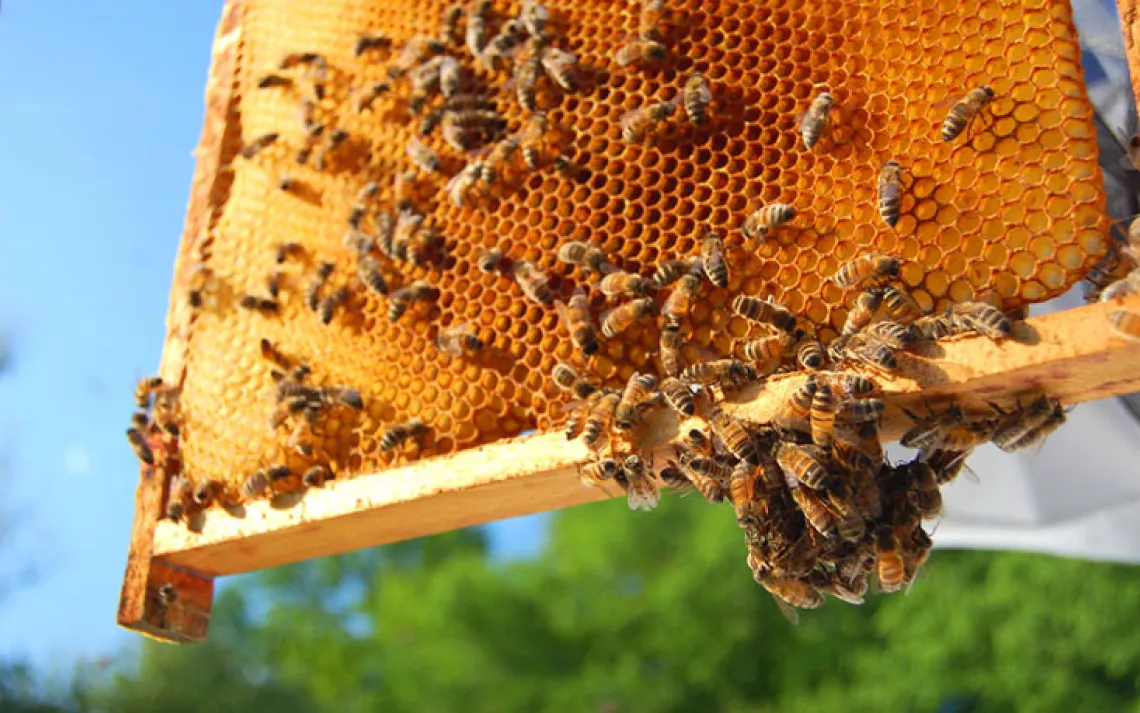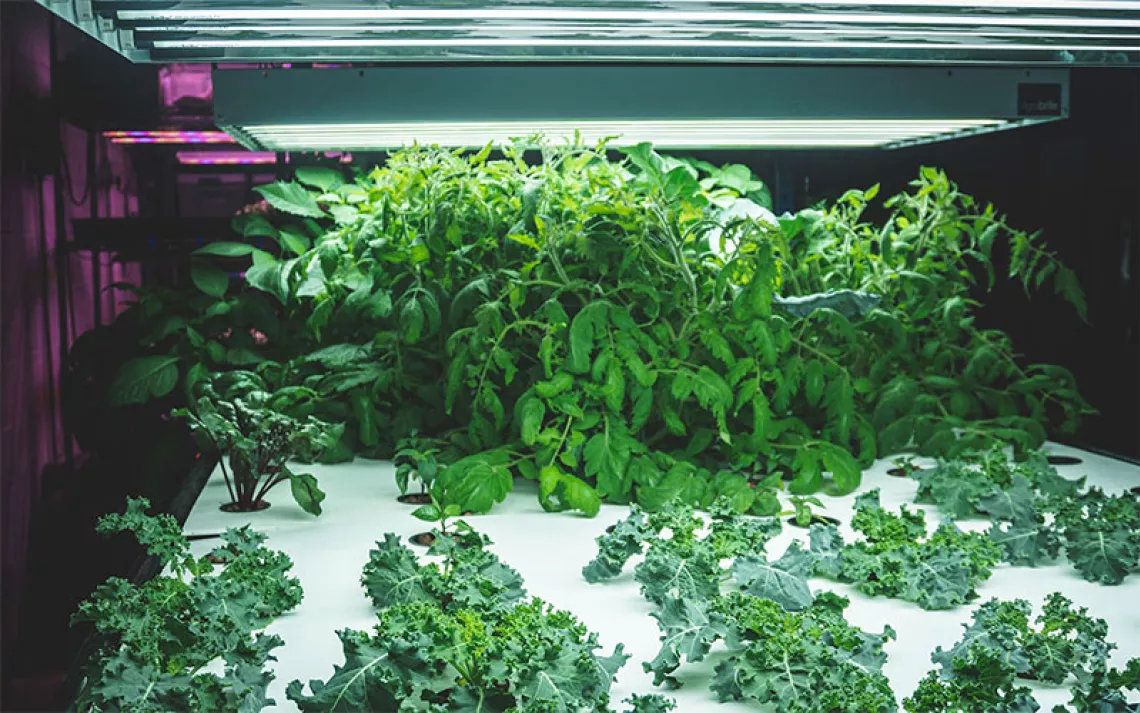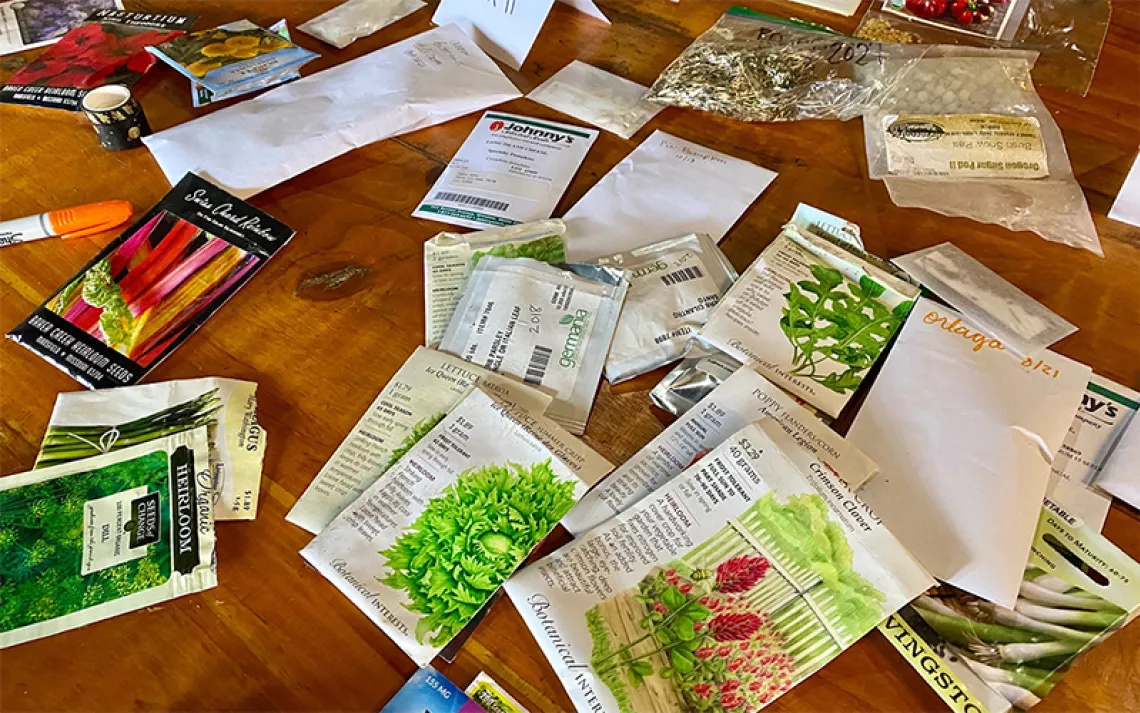Backyard Beekeeping 101

There are a number of reasons Americans are taking up beekeeping -- a backyard colony can help your garden produce more fruits and veggies, harvesting your own honey cuts down on your grocery bill, and honey bees continue to be threatened by colony collapse disorder. Take your pick, and join the growing ranks of urban apiarists.
Keepers of rooftop and backyard hives extol the spiritual benefits of beekeeping, as well as the tasty ones.
"It is a joy to have them around and observe their intricate dance with life," says Ruby Blume, a Bay Area beekeeper who teaches courses on the subject at The Institute of Urban Homesteading in Oakland. "When the bees come out in spring there's a huge uplifting feeling in my spirit, and I know it's time to start gardening and engaging with the outside world again."
A single hive in an urban setting can produce as much as 60 pounds of honey, requires less management than a cat or dog, and has relatively low start-up costs, making it an appealing way for city folk to connect with their country roots. Here are a few things to consider when contemplating a hive of your very own:
You will need to do your research. "The more you know, the better beekeeper you'll be," advises Blume. There is a wealth of resources out there for aspiring beekeepers, from books to classes. Take several classes, says Blume, or find a mentor. Most cities have beekeepers associations full of enthusiasts who would be happy to help.
But first, investigate your city's laws — you don't want to unintentionally become a fugitive while pursuing your apiarist dreams.
Consider the financial investment. While the initial cost is not outlandish, beekeeping will require some funds. A beginner kit can cost anywhere between $150-$400, and doesn't include bees. But don't lose heart just yet; some beekeeping organizations have resources to mitigate the financial burden of classes and equipment, and catching your own swarm will alleviate the cost of the insects themselves.
Will your yard or rooftop make a good home? Bees thrive in many conditions, but your neighbors may not be as adaptable. Your bees will travel up to 5 miles away from the hive to forage, so be respectful and do your best to keep your bees safe and out of others' way. Provide them water, flowers, and an unobstructed flight path. Most colonies will stick to one route as they travel to and from the hive to forage, and humans routinely walking through the colony's flight path can upset both the bees and the pedestrians. In Keeping Bees, author Ashley English advises constructing a high hedge or tall fence to encourage bees to fly up and over the heads of passersby.
When it comes to weather, bees like morning sun, afternoon shade, and very little wind or fog, says Blume, so choose a spot for their hive carefully.
Procuring your bees. A starter colony can be ordered from a supplier and will set you back $60 - $150, but be careful to consider your environment -- bees shipped from warm weather won't do well in cold climes. Catching your own swarm solves this problem, as does finding an established beekeeper who will split their colony for you.
Do you have time? Most likely, yes. "Being a good beekeeper is mostly about observing and only intervening when you can see something is wrong," says Blume. Depending on the system you choose (Top Bar vs. Langstroth hive), you'll only need to visit your hive weekly, monthly, or even yearly, depending on the season. When your bees start producing honey, expect to set aside a few hours for extraction. Otherwise, according to Blume, most people interfere too much. "Bees are incredibly developed creatures," she says. "They do what they do very well without help from us."
 The Magazine of The Sierra Club
The Magazine of The Sierra Club



